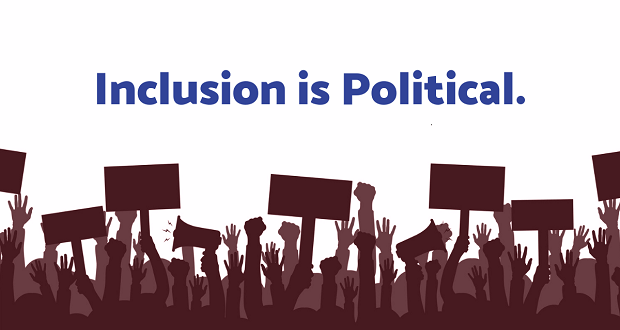
Employee surveys are focused on telling a quantitative story. However, there is also a qualitative story beyond the numbers. This blog post provides analysis and recommendations to ensure employee surveys foster a culture of growth in transparency, judgment, and action that centers justice. Likert’s original 5-point scale is one of the most common tools in the scientific and academic community’s research toolkit for employee surveys. A typical 5-point Likert has a question range something like the following: 1) Strongly disagree, 2) Disagree, 3) Neither agree nor disagree, 4) Agree, and 5) Strongly agree. The strengths of the 5-point Likert scale are numerous:
- Simple to understand and use for survey administrators and respondents alike
- Produces quantitative data that can be analyzed with relative ease
- Respondents have choices without becoming overwhelmed
- Gives respondents an option to be neutral (rather than having to choose an alternative that does not reflect their thinking)
- Delivers superficial insight into what people are thinking and feeling
Employee surveys must strike a delicate balance, and a 5-point Likert-type scale is typically used to increase the response rate and quality and reduce respondents’ “frustration level.” Sometimes, these quantitative responses are supplemented by a sixth option: 6) I prefer not to answer. Moreover, these quantitative questions are usually complemented with three to five open-ended questions at the end of the survey. These qualitative questions add the potential for depth and insight to the survey.
However, employee surveys, particularly 5-point Likert Surveys, can reinforce leadership cultural misperceptions and place marginalized groups in a double bind where they feel both stressed and unheard. Unfortunately, due to costs and resources, most firms limit the number of open-ended questions and do not strengthen their employee survey process with employee listening sessions or stakeholder interviews. For example, take the question below:
- My uniqueness is valued in this organization:
- Strongly disagree
- Disagree
- Neither agree nor disagree
- Agree
- Strongly agree
- I prefer not to answer
What does “I prefer not to answer” tell you that is actionable? For example, is the respondent selecting this answer because they are unsure of the survey’s confidentiality, that “uniqueness” is an unimportant concept, or that no response captures how they feel? Similarly, what does the response of “Neither agree nor disagree” tell you that is actionable?
Moreover, does a survey response of “disagree” or “agree” place the respondent in a bind? A response of “disagree” is a very definite statement. One is saying that they do not feel valued by the organization. On the other hand, does a response of “agree” give the false impression that the respondent feels good about how they are valued? More context is needed for both responses.
At The Winters Group, we focus on centering justice. And while it might raise the cost and complexity of the survey, we would recommend the following approach:
- My uniqueness is valued in this organization:
- Strongly disagree
- Disagree
- Agree
- Strongly agree
- Please use this space if you would like to provide additional context to your response: ________________________________________________________________________________________________________________________________________
Removing the “neither agree nor disagree” (NAND) option is an intensely debated topic with excellent arguments on both sides. Leaving it off could frustrate respondents that do not have a strong opinion but cannot find an answer that suits them. However, researchers also argue that NAND allows survey respondents to avoid forming opinions. NAND is one of the most common choices when the respondent has a central tendency bias (caused by trying to breeze through the survey). It may easily be selected by those not passionate either way. However, our employee survey objective should be to obtain actionable responses and lessen respondent frustration. We believe providing the opportunity for the respondent to provide context regarding their answer strikes a nice balance.
An important caveat to this methodology is that if the respondent does not trust confidentiality and fears retaliation of negative comments, you will raise their discomfort and stress to the point that you will decrease your overall response rate. Therefore, to center justice, the onus is on an organization’s leadership team to create a record of accomplishment in transparency, vulnerability, open-mindedness, and empathy so that employees can respond safely and without a threat of loss to their employment, relationships, role, and responsibilities.
We would also recommend that organizations complement surveys with the following strategies:
- Key Stakeholder Interviews: An analysis to understand the opportunities, challenges, and understanding of DEIJ (diversity, equity, inclusion, and justice) from organizational leaders and BIPOC (Black, Indigenous, and people of color) organizational stakeholders.
- Listening Sessions and Focus Groups: An analysis of various organizational stakeholder opportunities, challenges, and daily experiences.
- Employee-Driven Action Planning: To ensure confidentiality, a vendor outside the organization communicates, administers, and analyzes the survey responses. Moreover, the vendor develops high-level, preliminary recommendations. However, to foster ownership, employees (non-leadership team) review, update, and develop plans to implement the recommendations.
The final suggestion cannot be understated. Employee-driven action planning allows employees to demonstrate their skills, insights, and judgment. It is also an opportunity for leadership teams to demonstrate trust in direct reports’ judgment.
Yes. Employee surveys tell a story. But be sure it is accurate and fosters a culture of growth in transparency, judgment, and action that centers justice.


















